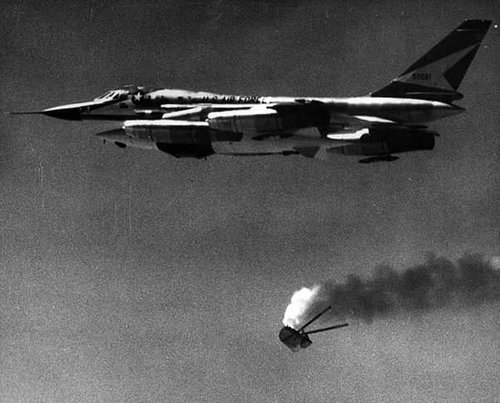A good link to understand the design evolution (structural) of the Hustler and understand why it regained most of its potential only after exiting active service:
While the Hustler was still in service, two major changes to all B-58s were integrated as a result of ‘5664’s loss. The first was a fix to the flight control system resulting in reduced activity gain of the aileron control input in response to yaw heading. Additionally, small trim surfaces found inboard of the elevons of several early B-58s, were deactivated and replaced by fixed trailing edge fairings.
The second change was a physical strengthening of the vertical fin and associated fuselage structure just forward of the tail. New aircraft were built with these modifications integral to the flight control system and structure, respectfully.
A second B-58 was eventually pulled from the production line and modified to the new standard. Just short of a month after ‘5664 and its crew evaporated in the skies over Oklahoma, Beryl Erickson climbed into this modified aircraft, taxied to the end of the main Carswell AFB runway, and headed skyward to complete the test that Fitzgerald and Siedhof had died attempting. Once at altitude and speed, Erickson shut down the right outboard engine. The airplane yawed, quickly stabilized, and moments later, recovered without incident. No ancillary problems were encountered. Within a week of the test the B-58 was officially cleared for Mach 2.0 flight in a high-q, far aft c.g. condition [ending a M1.6 restriction]


